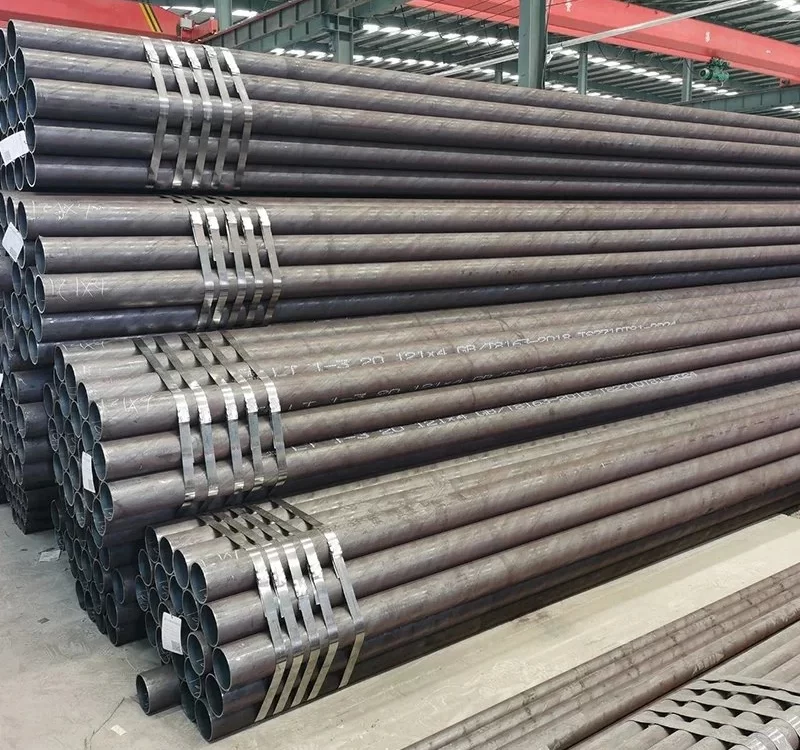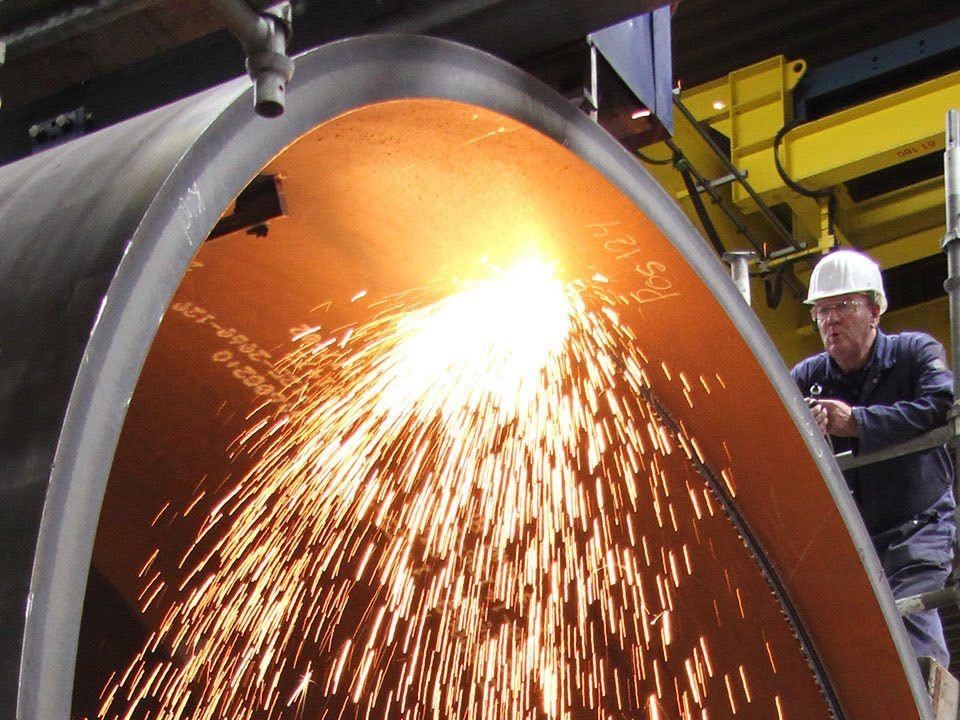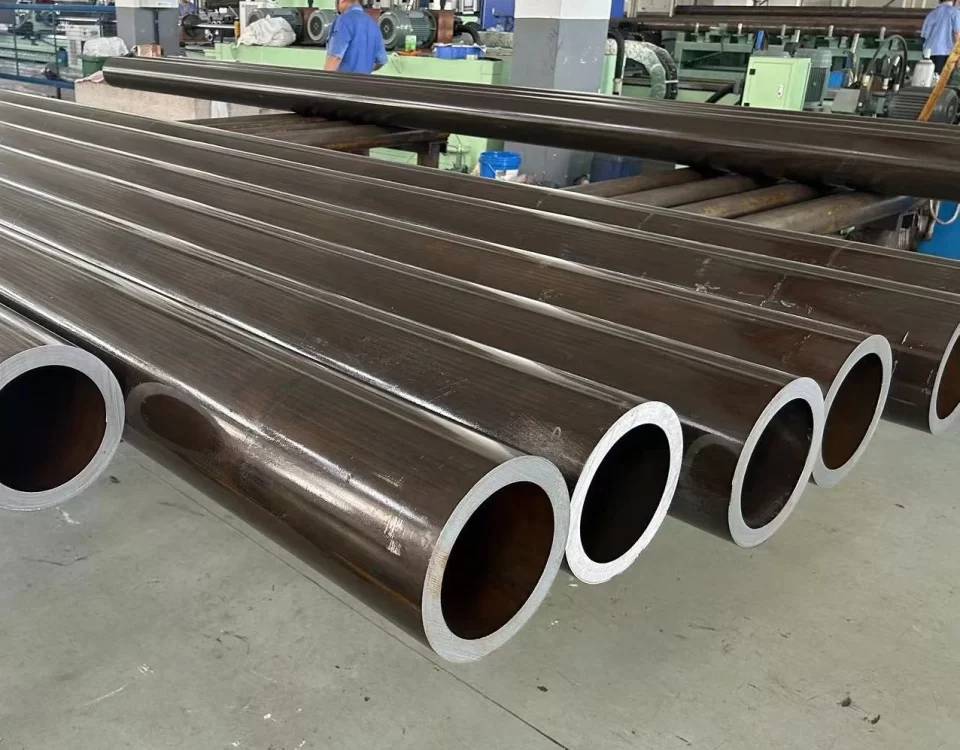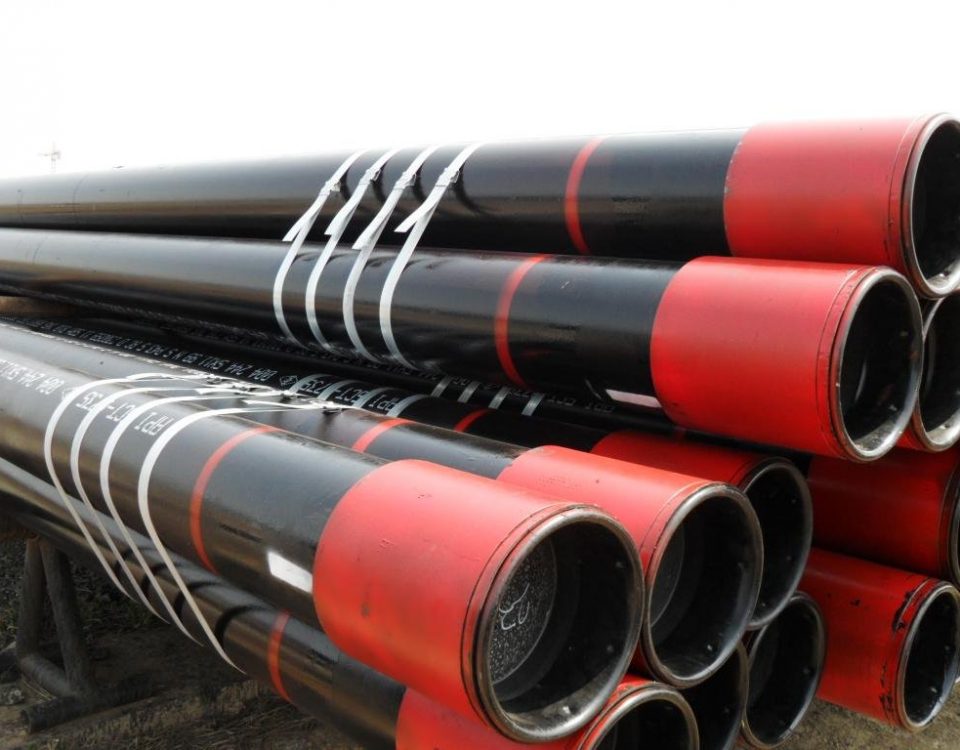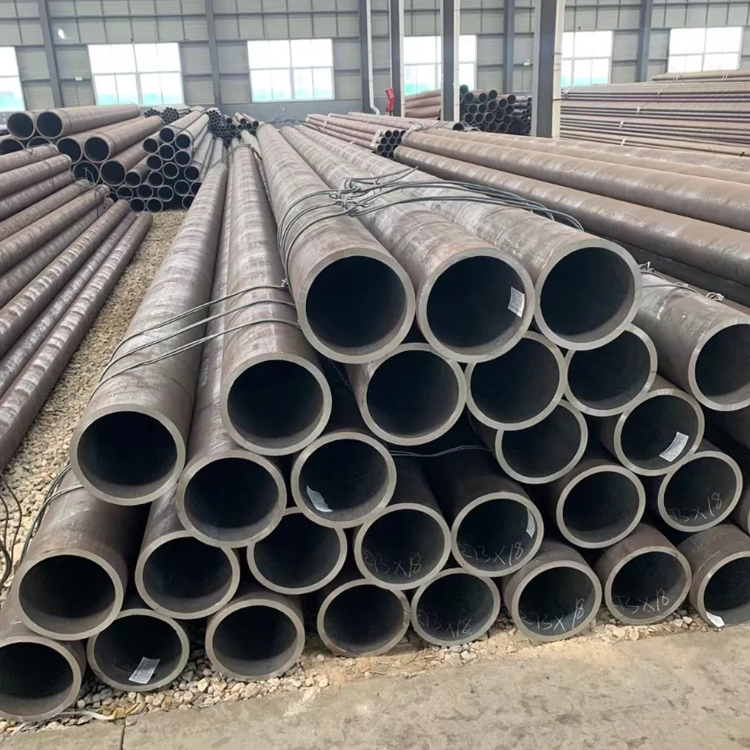
Struktur paip keluli lancar
Ogos 22, 2023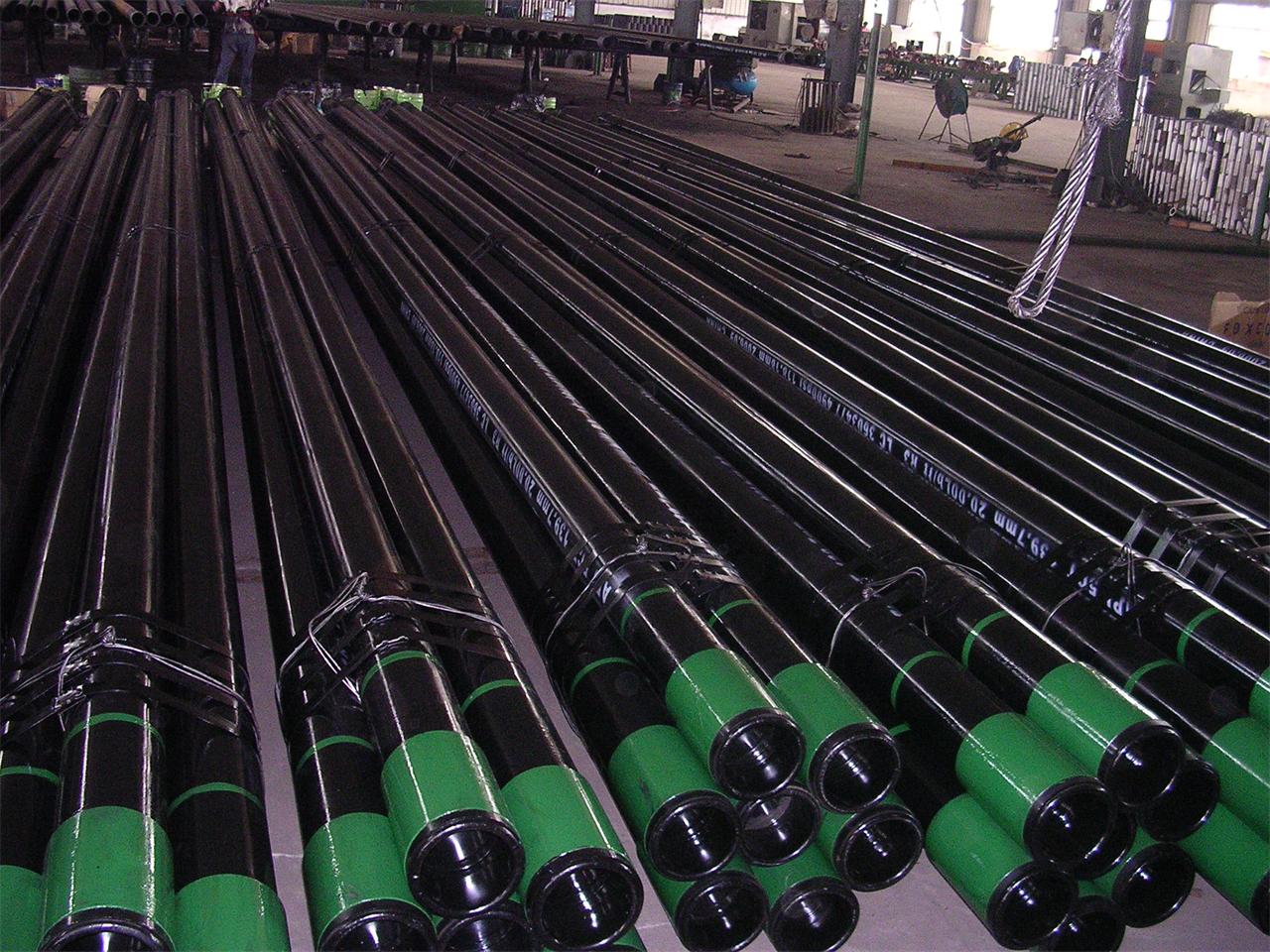
paip sarung minyak proses rawatan haba,Bagaimanakah selongsong minyak diperiksa dan diuji untuk memastikan kualitinya?
September 4, 2023Selongsong Minyak dengan Kekuatan Tinggi dan Keliatan serta Kaedah Pengeluarannya
Penerangan
Selongsong minyak dengan kekuatan dan keliatan tinggi merupakan komponen penting dalam operasi penggerudian minyak dan gas. Ia direka untuk menahan tekanan tinggi, bahan yang melelas, dan persekitaran yang menghakis, yang biasa ditemui dalam operasi penggerudian. Selongsong minyak selalunya diperbuat daripada keluli dan harus mempunyai sifat khusus seperti kekuatan tinggi, merupakan, dan kakisan rintangan.
Kaedah Pengeluaran
Kaedah pengeluaran melibatkan beberapa langkah, termasuk pemilihan bahan, rawatan haba, membentuk, dan pemeriksaan.
1. Maklumat ini telah mengesahkan kekuatan tinggi dan kemuluran bahan
Bahan asas untuk selongsong biasanya keluli karbon berkualiti tinggi atau keluli aloi. Bahan dipilih berdasarkan keadaan jangkaan operasi penggerudian, seperti suhu, tekanan, dan persekitaran yang menghakis.
2. Membentuk
Keluli dipanaskan pada suhu tertentu dan kemudian dibentuk menjadi paip. Ini selalunya dilakukan dengan rolling panas, di mana keluli dilalui melalui satu siri penggelek yang membentuknya menjadi bentuk dan saiz paip yang dikehendaki. Paip kemudiannya disejukkan dan dikeraskan.
3. Rawatan haba
Seterusnya, paip menjalani proses rawatan haba. Ini boleh termasuk pelindapkejutan dan pembajaan, yang digunakan untuk meningkatkan kekuatan dan keliatan keluli. Pelindapkejutan melibatkan pemanasan keluli kepada a suhu tinggi dan kemudian menyejukkannya dengan cepat, manakala pembajaan melibatkan pemanasan keluli ke suhu yang lebih rendah dan kemudian perlahan-lahan menyejukkannya.
4. Pemeriksaan dan Pengujian
akhirnya, paip diperiksa dan diuji untuk memastikan ia memenuhi piawaian yang diperlukan. Ini boleh termasuk pemeriksaan visual, ujian kekerasan, dan ujian ultrasonik. Jika paip lulus ujian ini, ia kemudiannya sedia untuk digunakan sebagai sarung minyak.
Ini adalah garis asas tentang cara sarung minyak kekuatan dan keliatan tinggi dihasilkan. Proses sebenar boleh menjadi lebih kompleks dan boleh berbeza-beza bergantung pada keperluan khusus selongsong.
kelebihan
- Peningkatan Ketahanan: Kekuatan dan keliatan tinggi selongsong minyak ini membolehkannya menahan tekanan tinggi dan bahan yang melelas, meningkatkan jangka hayat mereka dan mengurangkan keperluan untuk penggantian.
- Keselamatan yang dipertingkatkan: Ciri-ciri ini juga meningkatkan keselamatan operasi penggerudian, kerana ia mengurangkan risiko kegagalan selongsong, yang boleh membawa kepada kemalangan besar.
- Kos-Efektif: Walaupun proses pengeluaran mungkin lebih kompleks dan mahal, peningkatan ketahanan dan keselamatan selongsong ini boleh membawa kepada penjimatan kos yang ketara dalam jangka masa panjang.
Kesimpulan
Pengeluaran selongsong minyak dengan kekuatan dan keliatan tinggi adalah aspek kritikal untuk memastikan operasi penggerudian yang selamat dan cekap. Walaupun proses pengeluaran boleh menjadi kompleks, faedah dari segi ketahanan, keselamatan, dan penjimatan kos menjadikannya pelaburan yang berbaloi.
Ciptaan ini tergolong dalam bidang teknikal pembuatan paip keluli lancar dalam industri metalurgi, dan khususnya berkaitan dengan sarung minyak dengan kekuatan dan keliatan super tinggi yang sesuai untuk telaga dalam atau telaga ultra dalam dan kaedah pengeluarannya.
Teknik latar belakang
Dengan peningkatan kedalaman penggerudian di medan minyak dan gas, peningkatan suhu dan tekanan, persekitaran geologi selongsong petroleum yang digunakan untuk kepala telaga tetap telah berubah dengan ketara, dan keadaan mekanikal yang digunakan juga telah berubah dengan sewajarnya. Beban penyemperitan luaran yang ditanggungnya dan beban paksi semakin tinggi. Selongsong minyak berkualiti tinggi seperti V125 yang ditentukan oleh piawaian Institut Petroleum Amerika umumnya menggunakan keluli aloi siri Cr-Mo-V. Oleh kerana peleburan yang kompleks, proses penggulungan dan rawatan haba sarung minyak jenis keluli ini, komposisi aloi dan proses pembuatan tidak sesuai. , akan menyebabkan kekuatan dan keliatan selongsong minyak berkurangan, dan tidak dapat menahan beban penyemperitan luaran dan beban paksi yang dibawa oleh telaga dalam atau ultra dalam, yang akan memburukkan lagi kerosakan dan kegagalan sarung minyak, dan kerosakan dan kegagalan selongsong akan dengan mudah membawa kepada kegagalan lubang telaga. Masalah kompleks seperti ketidakstabilan, kerosakan takungan, kesukaran menggerudi dan menyimen, dan lain-lain., mengancam keselamatan operasi medan minyak secara serius, malah membawa kepada kerugian ekonomi yang besar seperti kemalangan kemusnahan perigi. Oleh itu, medan minyak mengemukakan keperluan yang lebih tinggi pada prestasi selongsong minyak.
Pada masa ini, masalah yang perlu diselesaikan untuk selongsong minyak untuk telaga dalam atau ultra dalam ialah padanan kekuatan ultra tinggi dan keliatan tinggi. Prestasi selongsong minyak berkekuatan tinggi dan keliatan bukan sahaja berkaitan dengan komposisi bahan yang digunakan, tetapi juga berkait rapat dengan kaedah pembuatannya. Seperti yang kita tahu, keliatan impak keluli berkekuatan ultra tinggi bergantung kepada ketulenan keluli, komposisi dan penghalusan struktur. Teknologi peleburan ultra-tulen diguna pakai untuk mengurangkan kandungan sulfur, unsur kekotoran fosforus dan gas dalam keluli berkekuatan ultra tinggi sebanyak mungkin, dan mengurangkan bilangan kemasukan, Jadi ketangguhan kesan yang memuaskan dapat diperoleh. Menggunakan proses rawatan haba yang sesuai, Struktur mikro yang dicirikan oleh martensit lath ultra-halus sebagai matriks dan menyebarkan fasa mulur austenit diperolehi dalam keluli kekuatan ultra tinggi, dan diperoleh semasa proses pelepasan minyak dan lurus yang tinggi dan kualiti permukaan dan tekanan sisa yang rendah adalah cara utama teknikal dan berkesan untuk mencapai kekuatan minyak yang sangat tinggi dan ketahanan minyak.
Walau bagaimanapun, Gred keluli semasa yang digunakan dalam casing minyak mengandungi kekotoran yang tinggi seperti sulfur dan fosforus, dan struktur logam mengandungi kemasukan. Aliran logam yang tidak rata semasa proses rolling menghasilkan sifat mekanik yang tidak konsisten dalam arah mendatar dan menegak. Lebih-lebih lagi, dalam kaedah pengeluaran selongsong minyak semasa, Medium pelindapkejutan dalam proses rawatan haba adalah air, yang mudah menyebabkan retak. Pada masa yang sama, Kerana proses menindik dan rolling yang tidak munasabah, Proses rawatan haba dan kaedah lurus, yang terbaik kekuatan dan ketangguhan perlawanan selongsong, dan menyebabkan tekanan sisa yang berlebihan, dan ketepatan dimensi geometri selongsong adalah miskin, yang secara langsung mempengaruhi keupayaan produk untuk menahan keruntuhan.
Kandungan ciptaan
Tujuan ciptaan ini adalah untuk mengatasi kekurangan dalam seni terdahulu dan memberikan selongsong minyak dengan kekuatan dan ketangguhan yang tinggi yang dapat memenuhi kehendak keadaan pengeluaran selari yang sangat baik atau sangat dalam dalam bidang minyak.
Objek lain ciptaan ini adalah untuk menyediakan kaedah pengeluaran selongsong minyak dengan kekuatan dan keliatan tinggi, yang boleh memenuhi syarat pengeluaran telaga dalam atau telaga ultra dalam di medan minyak.
Ciptaan ini direalisasikan melalui skim teknikal berikut:
Selongsong minyak dengan kekuatan dan keliatan tinggi, dicirikan bahawa komponen mengikut peratusan berat adalah: C: 0.22-0.35%, Si: 0.17-0.30%, MN: 0.45-0.60%, TK: 0.80-1.10%, MO: 0.70-1.10%, Al: 0.015-0.040%, Ni<0.20%, Cu<0.20%, V: 0.070-0.100%, NB<0.050%, sebagai<0.0015%, P<0.010%, S<0.003% , dan bakinya adalah besi.
Peranan unsur pengaloian utama ialah:
C: 0.22-0.35%. C ialah unsur pembentuk karbida yang boleh meningkatkan kekuatan keluli. Jika terlalu rendah, kesannya tidak ketara, dan jika ia terlalu tinggi, ia akan mengurangkan keliatan keluli.
MN: 0.45-0.60%, Mn ialah unsur pembentuk austenit, yang boleh meningkatkan kebolehkerasan keluli, meningkatkan jumlah austenit tertahan dalam keluli, dan menjejaskan keseragaman struktur panas.
TK: 0.80-1.10%. Chromium dapat memperbaiki sifat mekanikal, rintangan kakisan dan kebolehkerjaan keluli, tetapi ia dapat meningkatkan kelembutan keluli.
V: 0.070-0.100%, boleh memperbaiki bijirin, Bentuk karbida, dan meningkatkan kekuatan dan ketangguhan keluli. Tetapi apabila kandungan mencapai jumlah tertentu, peningkatan kesannya tidak akan jelas. Pada masa yang sama, Kerana harganya tinggi, Jumlah penggunaan harus terhad.
MO: 0.70-1.10%, terutamanya melalui pengukuhan penyelesaian karbida dan pepejal untuk meningkatkan kekuatan keluli, Sekiranya kandungannya terlalu tinggi, Ketangguhan keluli akan dikurangkan.
NB<0.050 terutamanya menapis bijirin dan meningkatkan ketangguhan keluli kekuatan tinggi.
Ni<0.20 terutamanya meningkatkan kekuatan dan ketangguhan keluli, meningkatkan ketahanan kakisan keluli, dan mengurangkan suhu peralihan rapuh keluli.
Cu<0.20, Tembaga dalam keluli aloi dapat meningkatkan kekuatan dan rintangan kakisan atmosfera keluli, terlalu banyak penambahan akan menjadikan keluli rapuh, Umumnya tidak lebih daripada 0.2%.
Untuk memastikan kekuatan dan ketangguhan yang sangat baik, Kaedah pengeluaran selongsong minyak ciptaan ini terdiri daripada langkah -langkah berikut:
(1) Bahan -bahan peleburan: Besi span dan keluli sekerap digunakan sebagai bahan mentah untuk pembuatan keluli, cair ke dalam keluli cair di relau arka elektrik (Sudah), dan keluli cair untuk casing minyak pembuatan diperolehi selepas penapisan di luar relau (LF) dan vakum (Vd) Mengurangkan komposisi mengikut peratusan berat badan adalah: C: 0.22-0.35%, Si: 0.17-0.30%, MN: 0.45-0.60%, TK: 0.80-1.10%, MO: 0.70-1.10%, Al: 0.015-0.040%, Ni< 0.20%, Cu<0.20%, V: 0.070-0.100%, NB<0.050%, sebagai<0.0015%, P<0.010%, S<0.003%, dan bakinya adalah besi.
(2) Pemutus dan Rolling Berterusan: Keluli cair kemelut tinggi yang disebutkan di atas terus dibuang ke dalam billet bulat, dan billet pemutus berterusan yang disejukkan dipanaskan dalam relau pemanasan anulus. Suhu relau pemanasan bilet tiub adalah 1300-1320 Kegunaan. , rolling berterusan, pengurangan diameter tetap, penyejukan, dan menggergaji; antara mereka, suhu berpusatkan haba adalah 1260-1270 ° C, suhu menusuk panas adalah 1240-1250 ° C, suhu bergulir berterusan adalah 1070-1120 ° C, dan suhu pengurangan diameter tetap adalah 910-910 ° C 930 ° C..
Relau cincin:
Tiub suhu pemanasan kosong: 1280~ 1290 ℃, perbezaan suhu yang dibenarkan: ± 5 ℃.
Proses perforasi:
Piercer conical tiga gulung digunakan untuk mengurangkan ketegangan ricih menusuk keluli aloi dan mencegah kecacatan seperti retak, melipat, dan penyingkiran di permukaan kapilari. Kadar pemanjangan menusuk adalah 3.5-4.2, nisbah diameter ke dinding adalah 20-28, Kadar pengembangan diameter di bawah 35%, Kelajuan keluar mesin menusuk berada di bawah 0.9m/s, dan toleransi diameter tiub bulat pemutus berterusan dikehendaki menjadi ≤ ± 1.4% , Toleransi ovaliti ≤ 2.5%, untuk memastikan saiz geometri dan ketepatan bentuk kapilari. Suhu menindik ialah 1240-1250 ° C.
Proses rolling berterusan:
Tujuan proses rolling berterusan adalah untuk mengurangkan diameter, Panjangkan dan mengurangkan dinding tiub kapilari yang dipindahkan dari proses menusuk, dan pada masa yang sama meningkatkan kekasaran permukaan dalaman dan luaran tiub kosong dan meningkatkan keseragaman ketebalan dinding.
Semasa bergulir berterusan, Permukaan dalaman kapilari bersentuhan dengan mandrel di bahagian atas lulus, Tetapi tidak di sisi depan. Logam di bahagian atas lubang dilanjutkan kerana tekanan luaran roll dan tekanan mandrel, dan ia mengembang ke arah circumferential semasa memanjangkan paksi, Walaupun logam di dinding sisi lubang juga berkembang apabila logam di bahagian atas lubang meluas. Ia diregangkan dan menyusut dengan arah longitudinal. Mengawal kadar pengurangan setiap proses penggulungan berterusan, supaya nisbah kawasan keratan rentas yang berkesan pada paip kosong sebelum dan selepas ubah bentuk dalam proses rolling berterusan adalah 2.8 kepada 6.5, untuk memastikan tenaga kesan menegak dan mendatar selongsong minyak cenderung konsisten. Kelajuan masuk maksimum rolling berterusan berada dalam 1.5m/s, kelajuan keluar berada dalam 3.5m/s, dan nisbah kawasan keratan rentas tiub kapilari ke tiub kosong adalah kira-kira 3.7. Suhu rolling berterusan ialah 1070 ~ 1120 ℃.
Proses pengurangan diameter tetap:
Proses saiz dan pengurangan adalah proses rolling berterusan badan berongga. Sebagai tambahan kepada peranan saiz, ia juga memerlukan kadar pengurangan yang besar, Dan bilangan tempat kerja adalah 24. pertama, Paip sisa dipanaskan hingga 920 ° C hingga 1050 ° C dalam relau pemanasan dan kemudian dibebaskan. Setelah mengukur suhu permukaan di pintu keluar jadual roller, Peranti penurunan air tekanan tinggi 20mpa digunakan untuk mengeluarkan paip sisa dari unit rolling berterusan semasa proses rolling. Skala, kemudian dilancarkan dalam kilang saiz dan mengurangkan. Suhu rolling saiz adalah 910-930 ° C, Kelajuan pintu masuk saiz adalah antara 0.5-1.4m/s, Kelajuan keluar antara 0.51-7m/s, dan nisbah kawasan keratan rentas yang berkesan berada dalam 1.5.
(3) Rawatan haba: Proses rawatan haba pelindapkejutan dan kemudian pembiakan diadopsi untuk paip kosong yang disebutkan di atas.
Proses pelindapkejutan adalah seperti berikut: Memanaskan selongsong petroleum hingga 940 ° C. hingga 920 ° C.. dan memanaskannya 30 minit untuk membentuk austenit sepenuhnya. Medium pelindapkejutan adalah cecair pelindapkejutan berminyak untuk meningkatkan kekuatan dan kekerasan keluli.
Proses pembajaan adalah seperti berikut: suhu pembajaan adalah 640 ° C. hingga 660 ° C., pemeliharaan haba untuk 2 jam, Penyejukan udara digunakan untuk memperbaiki bijirin kristal, Homogenisasi struktur, menghapuskan tekanan dalaman, dan meningkatkan ketangguhan keluli.
(4) Paip sisa selepas rawatan haba di atas tertakluk kepada saiz haba dan rawatan pelindung haba, dan akhirnya pengesanan kecacatan untuk mendapatkan selongsong petroleum yang siap.
Untuk meminimumkan tekanan sisa selongsong minyak, mengurangkan tekanan sisa yang disebabkan oleh ukuran, meningkatkan ketepatan saiz dan bulat selongsong minyak, dan meningkatkan sifat mekanikal selongsong minyak, suhu saiz antara 550 dan 600 ° C sepanjang tempoh, Halaju saluran saiz paip sisa antara 1.2 dan 2.4m/s.
Dalam proses pelurus terma, pengurangan had elastik 1.55 kepada 1.75 kali (Pengurangan had elastik adalah titik permulaan ubah bentuk plastik permukaan paip keluli) dan suhu lurus yang sesuai dipilih untuk mengurangkan tekanan sisa yang dihasilkan oleh proses pelursi. Tingkatkan bulat dan kelebihan selongsong minyak dan meningkatkan prestasi selongsong minyak. Suhu optimum yang ditentukan oleh pengiraan dan eksperimen teoritis ialah 450-580 ° C, Tetapi dalam proses sebenar, Demi keselamatan, Suhu pelurus haba adalah antara 500 ° C-540 ° C.
Untuk meningkatkan prestasi sarung minyak, julat kawalan ketepatan geometri yang ketat telah ditubuhkan. Ketepatan geometri selongsong memenuhi syarat berikut: Ralat diameter adalah ± 0.8% daripada saiz diameter, Kesalahan ketebalan dinding adalah ± 8% dari saiz ketebalan dinding, Dan elips kesilapan kelebihan paip paip ialah ± 0.5%, Kesalahan lurus hujung paip ialah 1.5mm/m, dan kesilapan lurus badan paip ialah 1.0mm/m.
Selongsong minyak yang dihasilkan oleh kaedah pengeluaran ciptaan boleh mencapai gred keluli v150. Petunjuk yang dicapai oleh sifat mekanikal sarung minyak adalah seperti berikut:
Hasil kekuatan: 1057~ 1210mpa
Kekuatan tegangan: ≥1180mpa
Kesan ketangguhan: Tenaga Impak Charpy berskala penuh longitudinal ≥ 80j
Tenaga Impak Charpy berskala penuh ≥ 75j
Elongation: ≥16%
Prestasi keseluruhan selongsong (Ambil φ244.48 × 15.11 sebagai contoh)
Kekuatan anti-rungutan badan paip: ≥80mpa;
Kekuatan slip: ≥2800kn;
Kekuatan hasil dalam paip: ≥115mpa;
Tekanan sisa: ≤200mpa.
Dimensi Geometrik Selongsong Minyak;
Julat diameter: 242.52mm ~ 246.43mm;
Keluar dari bulat: ≤1.2mm;
Ketebalan dinding: -8.0%t ~ 8.0%t;
Straightness: akhir paip 1.5mm/m, badan paip 1.0mm/m.
Ciptaan ini telah berikutan kesan teknikal:
1. Minyak sarung paip dari ciptaan ini mengamalkan sistem aloi Cr-Ni-Mo-V yang dipadamkan dan keluli keluli yang terkawal, yang boleh mendapatkan jumlah ketangguhan austenit tertentu yang tersebar di matriks marten lathine ultrafine selepas fasa rawatan haba, Meningkatkan kekuatan dan ketangguhan keluli untuk menyesuaikan diri untuk menahan beban penyemperitan luaran dan beban paksi yang dibawa oleh telaga yang mendalam atau ultra.
2. Dalam kaedah pengeluaran ciptaan ini, melalui perumusan proses yang rasional seperti menindik dan bergulir, Biji -bijian keluli kristal dapat disempurnakan, dan kecacatan struktur dapat dielakkan.
3. Dalam kaedah pengeluaran ciptaan ini, Pemilihan proses rawatan haba adalah munasabah, Dan mungkin untuk membentuk martensit lath-order submicron sebagai matriks, zarah fasa kedua skala nano sebagai fasa pengukuhan hujan dan sejumlah austenit tertentu dengan kestabilan yang tinggi. Struktur komposit pelbagai fasa fasa sukar memastikan kekuatan dan ketahanan yang sangat baik.
4. Dalam kaedah pengeluaran ciptaan ini, Proses pelurus terma dirumuskan dengan munasabah, yang dapat meminimumkan tekanan sisa selongsong.
5. Julat kawalan ketepatan geometri yang ketat telah dirumuskan, yang dapat meningkatkan prestasi sarung minyak dengan kos yang berpatutan.
6. Medium pelindapkejutan dalam proses rawatan haba ciptaan ini adalah cecair pelindapkejutan berminyak, yang boleh mengelakkan kecacatan seperti retak di permukaan paip keluli.
Cara terperinci
Ciptaan ini akan diterangkan secara terperinci di bawah bersempena dengan contoh tertentu.
Ciptaan ini akan diterangkan secara terperinci di bawah dengan mengambil pengeluaran selongsong minyak φ244.48 × 15.11 sebagai contoh.
contoh:
Besi span dan keluli sekerap digunakan sebagai bahan mentah untuk pembuatan keluli, dan cair ke dalam keluli cair di relau arka elektrik. Setelah menyempurnakan di luar relau dan vakum degassing, Komponen keluli cair untuk pembuatan selongsong petroleum adalah: C: 0.22-0.35%, Si: 0.17-0.30%, MN: 0.45-0.60%, TK: 0.80-1.10%, MO: 0.70-1.10%, Al: 0.015-0.040%, Ni<0.20%, Cu<0.20%, V: 0.070-0.100%, NB<0.050%, sebagai<0.0015%, P<0.010%, S<0.003%, dan bakinya adalah besi.
Keluli cair di atas terus dibuang ke dalam billet bulat. Panaskan billet pemutus berterusan yang disejukkan di relau pemanasan cincin, Suhu relau pemanasan billet paip ialah 1310 ° C, selepas itu, berpusat, menindik, rolling berterusan, saiz dan pengurangan, penyejukan, menggergaji; antara mereka, Pusat haba adalah 1265 ° C , suhu menusuk panas ialah 1245 ° C, suhu bergulir berterusan ialah 1100 ° C, dan suhu pengurangan diameter tetap ialah 920 ° C. Ia cepat disejukkan hingga 450 ° C dengan katil penyejukan dan meniup kaedah penyejukan, dan menggergaji. Proses rawatan haba pelindapkejutan dan kemudian pembiakan diadopsi untuk paip kosong di atas: pelindapkejutan pada 930 ° C. (cecair pelindapkejutan berminyak), Tempering pada 645 ° C.. Selepas saiz haba pada suhu 560 ° C, Luruskan haba pada suhu 520 ° C, dan pengesanan kecacatan akhir, selongsong minyak siap diperoleh.
Dalam proses menusuk, kadar pemanjangan adalah 3.7, kadar pengembangan diameter adalah 28%, dan kelajuan keluar mesin menusuk adalah 0.7m/s. Dalam proses rolling berterusan, Nisbah kawasan keratan rentas yang berkesan dari tiub tandus sebelum dan selepas ubah bentuk bergulir berterusan adalah 4.3, Halaju pintu masuk adalah 1.2m/s, dan halaju keluar adalah 2.9m/s. Dalam proses diameter tetap dan dikurangkan, Nisbah kawasan keratan rentas yang berkesan adalah 1.2, Halaju pintu masuk adalah 0.9m/s, dan halaju keluar adalah 1.3m/s. Halaju keluar ukuran paip kosong ialah 1.8m/s. Dalam proses pelurus terma, pekali pengurangan lurus adalah 1.6 kali pengurangan had elastik.
Sifat mekanikal selongsong minyak yang dihasilkan oleh kaedah di atas dapat mencapai petunjuk berikut:
Hasil kekuatan: 1109MPa;
Kekuatan tegangan: 1213MPa;
Kesan ketangguhan: Tenaga kesan charpy berskala penuh longitudinal: 121J;
Tenaga kesan charpy berskala penuh mendatar: 114J;
Elongation: 17%.
Prestasi keseluruhan selongsong:
Kekuatan keruntuhan paip: 93.1MPa;
Kekuatan slip: 3208KN;
Kekuatan hasil dalam tiub: 130.6MPa;
Tekanan sisa: 162.31MPa.
Dimensi Geometrik Selongsong Minyak:
Julat diameter: 245.90mm ~ 246.20mm;
Keluar dari bulat: ≤0.6mm;
Ketebalan dinding: -4.5%t ~ 7.0%t;
Straightness: akhir paip 1.2mm/m, badan paip 0.9 ‰.
Selongsong minyak yang dihasilkan melalui reka bentuk jenis keluli cipta. Mengawal ubah bentuk rolling dan rawatan haba, dapatkan kesan seperti pengukuhan hujan, Pengukuhan Transformasi dan Pengukuhan Fasa Biji -bijian, meningkatkan kekuatan dan ketangguhan keluli, dan menyelesaikan masalah keretakan mudah dalam rawatan haba Paip keluli lancar keluli aloi. Menggunakan kaedah pemprosesan lurus dan haba termal, Tekanan sisa rendah yang diperlukan oleh paip keluli lancar diselesaikan, dan lenturan, ubah bentuk elips, dan ketepatan dimensi paip keluli lancar dikawal.

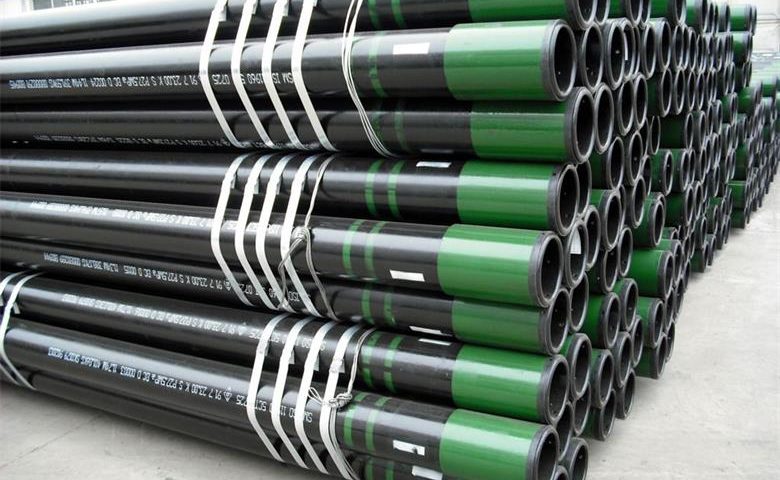
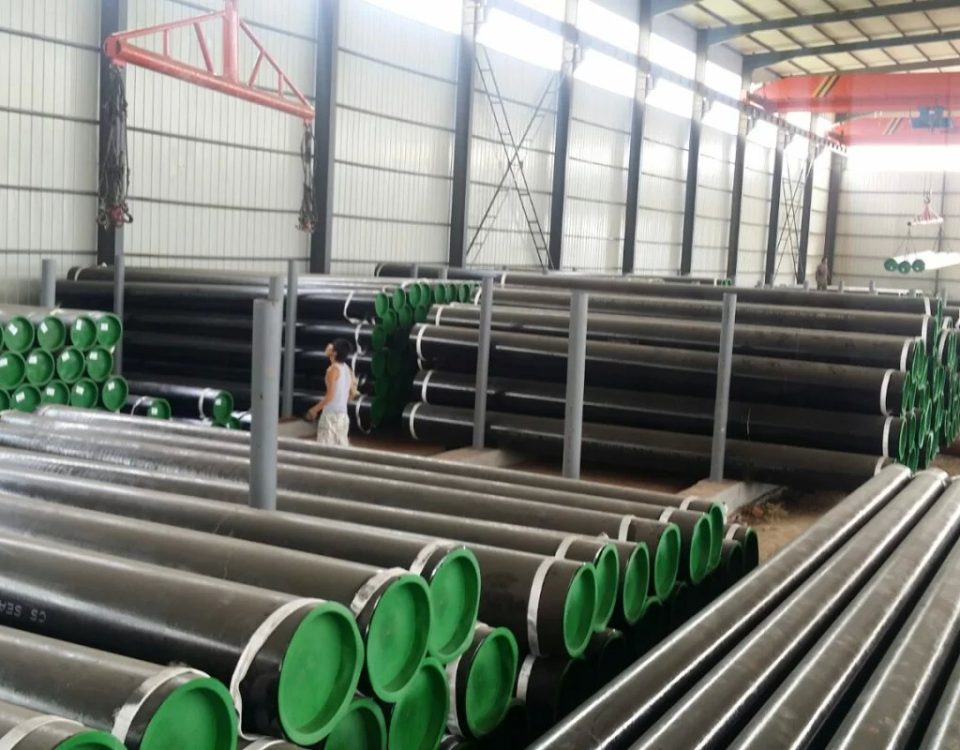
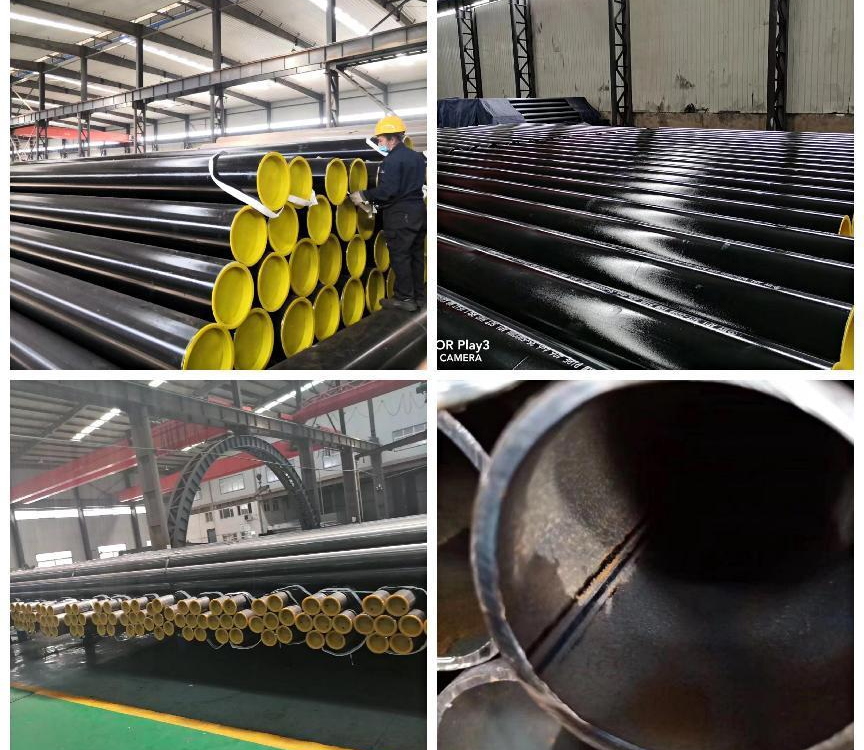
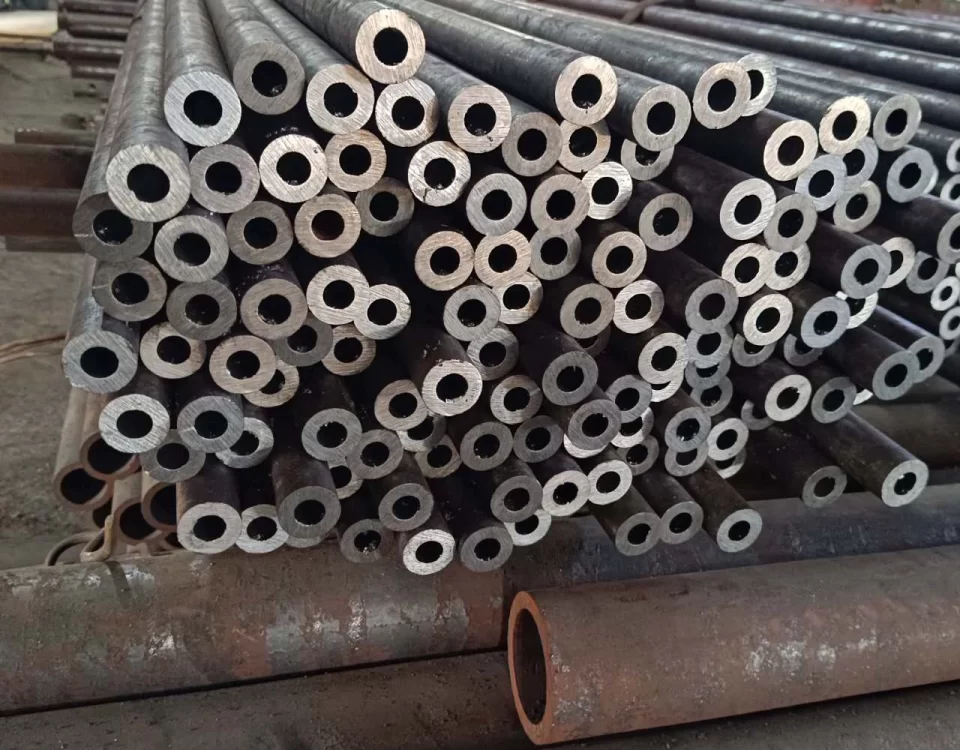
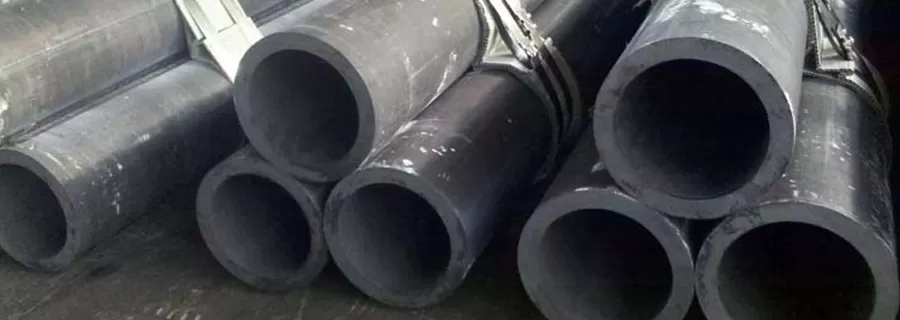
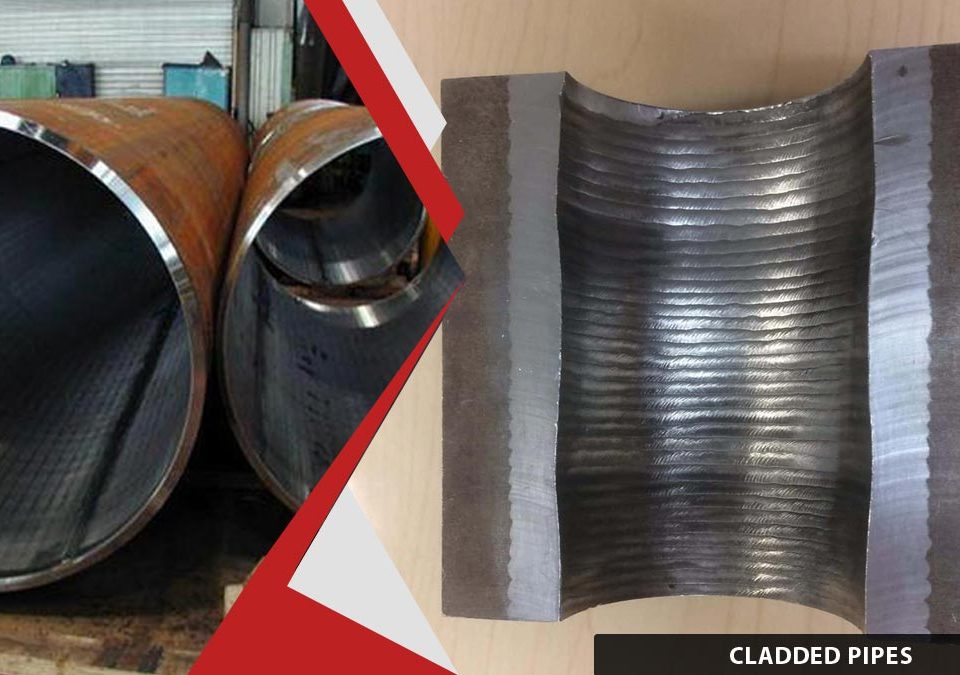
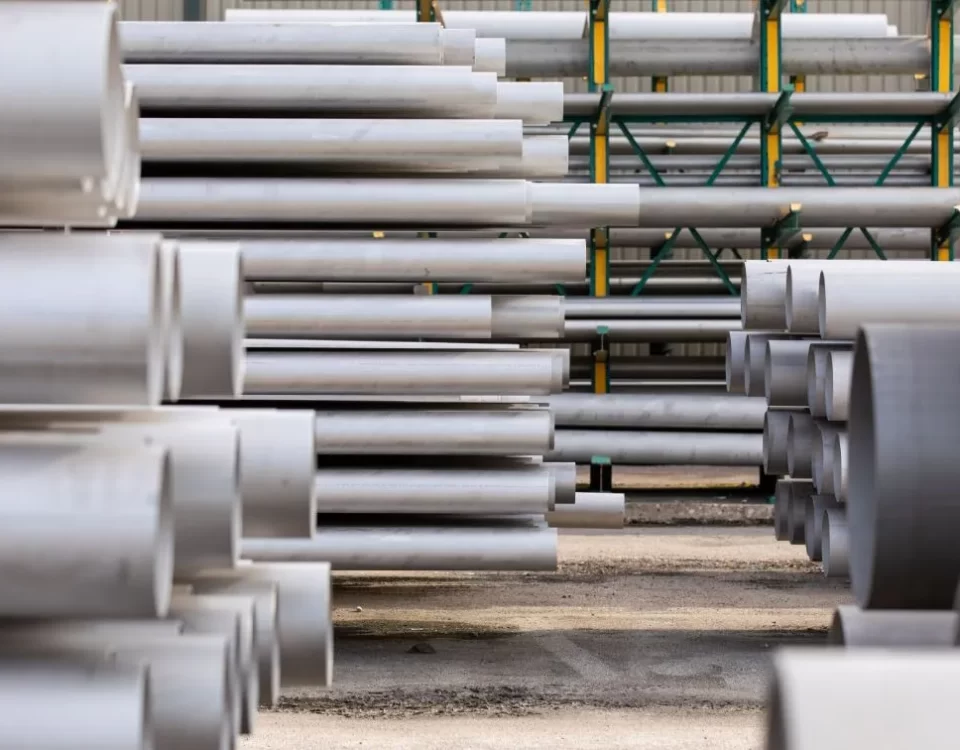
-steel-pipe.jpg)
